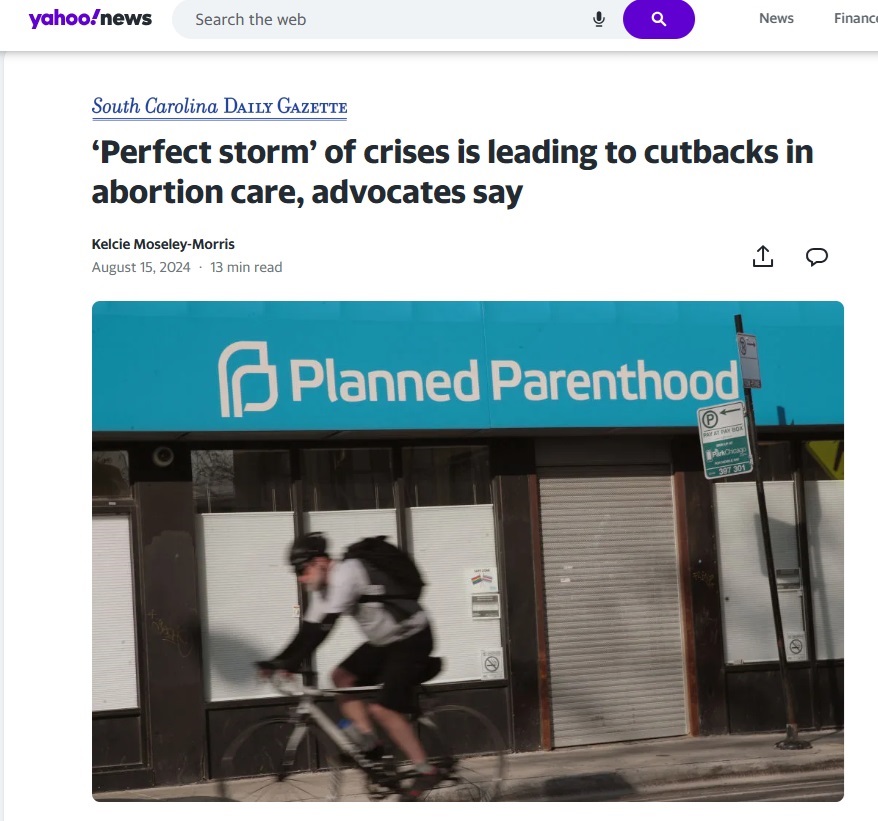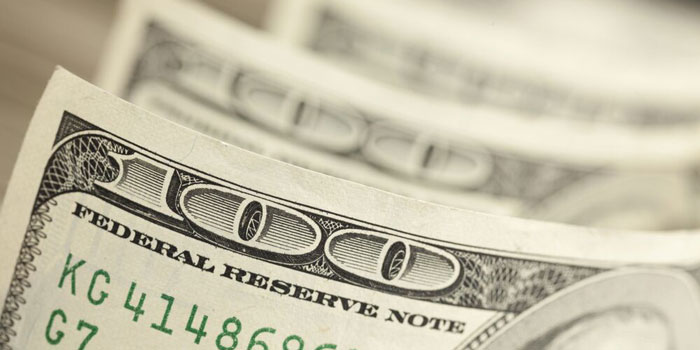The abortion industry and pro-abortion media have been busy claiming that abortion funds are drying up, just two years after the Supreme Court’s Dobbs v. Jackson Women’s Health Organization that overturned the decades-old Roe v. Wade court decision. The media claims the purported lack of funding is a “crisis,” a “perfect storm,” and “pure hell,” which is allegedly forcing “the abortion access movement” to stare “down a cliff.”
“According to leaders of Planned Parenthood affiliates and abortion funds, there simply aren’t enough dollars right now to support the need [for abortion] at any level,” The South Carolina Daily Gazette reported.
The Fuller Project, which has a mission of being a “global newsroom dedicated to groundbreaking reporting that catalyzes positive change for women” headlined its article, “A slap in the face’: Democrats go on abortion offensive, but grassroots funders are falling behind.” The Project wrote that “abortion funds — local grassroots groups that help people on the ground actually obtain abortions — are seeing funding plummet. At the same time, these funds are more stretched than ever before. Fourteen states now almost completely ban abortion, meaning more callers than ever are asking for financial support to travel long distances for access.”
No major shift in ‘abortion philanthropy’?
In addition, the pro-abortion Rewire News Group claims, “Abortion funds had hoped to see a major shift in philanthropy post-Dobbs, but that hasn’t come to fruition.” The outlet quotes Alisha Dingus, the D.C. Abortion Fund’s development director, as saying, “Even when we had the increase in donations, it was still mostly small-dollar grassroots donations. We didn’t see big philanthropy come to abortion funds and say, what can we do to make this process easier for abortion seekers?”
But this claim seems dubious. In 2023, the Buffett Foundation granted the National Abortion Federation Hotline Fund well over $55 million. Buffett also granted over $8 million to the National Network of Abortion Funds (NNAF), while the Packard Foundation granted NNAF $600,000. In addition, the Hewlett Foundation, a long-time abortion philanthropist, has “shifted” its “strategy” since the end of Roe v. Wade to fund abortion organizations and increase “access to medication abortion.”

Abortion Funding dwindles and media calls it the perfect storm Image Yahoo
Rewire also claimed in a headline: “Following National Funding Cuts, ‘July Was Pure Hell’ for Abortion Funds.” The outlet wrote: “With the biggest and best-funded national organizations in the space now saying they can no longer sustain the level of assistance they were providing, the abortion access movement is staring down a cliff, confronting the real possibility that large numbers of people could now be unable to obtain abortions altogether.”
Funding cuts are pushing abortion funds to the brink. Read this article by @RewireNewsGroup to learn why your support matters now more than ever.
Donate today to help us continue the fight: https://t.co/n74t1T9xAK 💚#AbortionFunds #ReproductiveRights #SupportUs pic.twitter.com/UkmmZlwH2J
— Silver State Hope Fund (@silverstatehope) August 14, 2024
What about abortion funds specific to states?
Oriaku Njoku, executive director of NNAF, claimed that state abortion funding groups saw a spike in donations just after the Dobbs decision, providing more than $36 million in abortion funding and $10 million in logistical support in 2023. NNAF’s 2023 990 lists 11 directors and staff who earned from $116,000 up to over $254,000 in salaries that year.
Florida Access Network’s donations have reportedly decreased by 80% — plummeting from $200,000 in donations just after Dobbs to $40,000 by April 2024. Bree Wallace, director of case management at the Tampa Bay Abortion Fund, told The Hill that in Florida, “Donations dropped 63 percent from 2022 to 2023.”
All Options Indiana begged for funds on X, writing that the group’s “resources for the Hoosier Abortion Fund are stretched thin.”
Similarly, Lexis Dotson-Dufault, executive director of the Abortion Fund of Ohio, told Yahoo.com, “While abortion funds have a huge increase in need, we are not seeing a huge increase in money coming in to support this need.”
D.C. Abortion Funds, “which had previously funded clinics as far away as West Virginia, limited its service area to the Washington, D.C. metro area. The fund now has a weekly budget for clients traveling from outside D.C.,” according to Rewire, which added that the Chicago Abortion Fund “had previously funded people seeking care in clinics as far away as Kansas, but has had to suspend this practice.”
In 2023, more people traveled to Illinois than to any other state for abortions per @Guttmacher. Abortion funds help women get here, but they're running out of $$. The Chicago Abortion Fund is limiting help for the first time in 5 yrs. https://t.co/nM0PWQHXwT @WBEZ
— Kristen Schorsch (@kschorsch) August 28, 2024
Rewired noted that “Colorado’s Cobalt Abortion Fund also announced new capacity limits last month,” and I Need an A told the outlet that other funding agencies like the Blue Ridge Abortion Fund, Carolina Abortion Fund, Florida Access Network, Indigenous Women Rising, Richmond Reproductive Freedom Project, and Utah Abortion Fund “also reported closures or funding reductions in July.”
Have large abortion groups cut back?
The Justice Fund, a collaborative funding program between the National Abortion Federation (NAF) and Planned Parenthood Federation of America (PPFA), previously “covered up to 50 percent of the cost of an abortion for qualifying callers,” claimed Rewire. But that has allegedly dwindled and “that ceiling is [now] 30 percent.”
“Discretionary funds that used to cover well over 50 percent of some patients’ costs are also gone, and each NAF member clinic now has a monthly cap on assistance, which sometimes results in patients receiving even less than 30 percent,” Rewire wrote, which The South Carolina Daily Gazette also noted.
“In 2023, NAF said it funded 106,865 people with an average amount of $519 per patient. So far in 2024, the hotline has funded 66,330 people at an average of $541 per patient,” reported the Gazette.
While NAF’s Hotline Fund reported in its 2022 990 that it granted over $52 million to domestic individuals the same year that Roe was overturned, “Multiple abortion funds said they had clients who arrived at clinics and were told that, despite what NAF’s hotline promised, less assistance was available to them due to the caps,” noted Rewire.
NAF CEO and President Brittany Fonteno told Rewire that NAF’s abortion funding hit $6 million per month this year. Fonteno added, “In order to keep funding at our current rate, and to continue to be able to cover up to 50 percent of the procedure cost for eligible patients, we would need an additional 20 million dollars to get us through the end of the year. She also said NAF would need an additional $1.4 million to help with travel expenses.
According to Fonteno “individual donations dropped nearly 40% in 2023 from the previous year after the Dobbs decision leaked,” the South Carolina Daily Gazette reported.
In addition to NAF, abortion funding cuts are also predicted from Planned Parenthood Federation of America (PPFA), “which also provides financial assistance for many of its patients in collaboration with NAF and through other internal programs,” Rewire reported.
The Abortion Care Network (ACN), a network of independent abortion providers, is also allegedly seeing declines in abortion funds. “The network has supported 32 clinics and gave out $700,000 to providers in recent months,” the Gazette claimed. “But for the network too, donations are down by one-third. The full amount of donations to the Keep Our Clinics campaign goes to clinic members, and the organization granted nearly $5 million to clinics in 2022, but only $3.4 million in 2023. The requests for support did not go down during that time, but donations did.”
The assumption may be that these funds pay for women’s abortions, but apparently not. According to the campaign’s donation page, the “funds are used to help clinics”…
- Make necessary security improvements[…]
- Replace equipment that has been damaged in a natural disaster or is beyond the life of equipment;
- Address clinic building repair issues;
- Cover legal costs to maintain compliance with increased unnecessary regulations;
- Pay staff and rent, cover medical supplies;
Cutting funds for later abortions first
Abortion groups and their media mouthpieces have falsely alleged that later abortions are not only rare but necessary, and are among the most needed due to health issues. And yet, when money grew tight, Big Abortion funding agencies chose to begin their cuts in this specific area.
A simple look at abortion facility websites reveal that later abortions are committed for any reason.
According to Fonteno, NAF’s funding changes “include no longer making exceptions for those in later stages of pregnancy who face higher costs — sometimes as much as $10,000,” the Gazette reported.
Fonteno claims this is “because the procedure costs more or they have to travel further to find a clinic that can provide it. That ‘exception budget,’ which was also used for patients facing extreme circumstances like intimate partner violence, will not exist for the remainder of the year…” the media outlet claimed.







